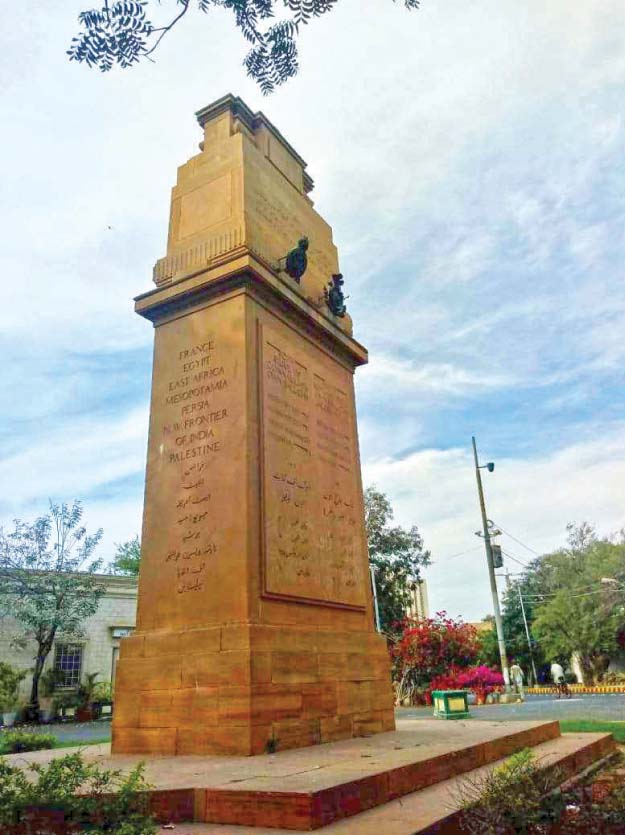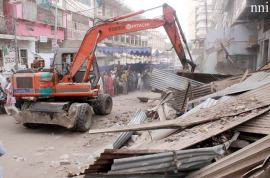
KARACHI: Frere Hall, an iconic architectural monument and an intrinsic feature in the city’s public life, sits in a state of decay. Located between Abdullah Haroon and Fatima Jinnah Road, Frere Hall is one of the few monuments in Karachi open to the public. Managed and maintained by the Karachi Metropolitan Corporation (KMC), it doubles as an event space and as a recreational park for the residents of the city. People of all ages can be seen enjoying its lush gardens; frequenting them as picnic spots and as idle leisure grounds. In recent years, the Hall has hosted book fairs, cultural events and conferences.
With all this talk of beautification of the city, perhaps the relevant authorities should also turn their attention to heritage sites that are embedded in the fabric of the city’s public life and its history. Frere Hall is one such site that awaits justice.
Historical value
The magnificent monument has stood witness to the city’s heritage over the years. Designed by Henry Saint Clair Wilkins, it was meant to serve as Karachi’s town hall. The monument was constructed in 1865 under the supervision of the second chief commissioner of Sindh, Sir Henry Bartle Edward Frere, and renamed in his honour in 1884. Its gardens, originally dedicated to the King and Queen of the British Raj were renamed Bagh-e-Jinnah after Independence and have been the site of various political gatherings over the years.
SC seeks response from Sindh govt on NAPA's relocation
More than just a colonial relic, the monument also stands as a testament to the skills and talents of the locals. Its Venetian-Gothic architecture showcases both British and local influences. The sculptors and craftwork embellishing the building are attributed to the handiwork of Sindhi craftsmen.The Hall also features the works of noted artist Sadequain, houses the Liaquat National Library with over 70,000 books on a variety of subjects, rare manuscripts and newspaper archives dating all the way back to 1952.

Deplorable conditions
One of Frere Hall’s noted features, the fountain, is now a pitiful sight due to lack of maintenance. Its glorious statues, made by Sindhi sculptors, have vanished one after the other. Commissioned as a gift from the Parsi philanthropist, Ediljee Dinshaw in 1890, the fountain once featured seraphs in its iconic design.
On top of the three-floor fountain, there once stood a statue of a woman holding a surahi [a clay pot for storing water] over her head. Situated underneath her were the sculptures of the couple, Hans Raj. The seraphs, angelic cupid-like creatures, stood on the sides of the fountain holding water torches. Carved into the design, on all sides, is the face of the Greek god, Cronus, embellished with flowers.
The statues are now rotting with rust and decay. Most of the seraphs now either serve as mantelpieces in guest houses or have been sold off in the black market.
The KMC parks department, located on the same road, has done little to preserve the building. The elderly who visit the parks have long since become accustomed to the deplorable conditions of the building while the youth remains unaware of its past glory and magnificence. However, when the locals learnt of the fountain’s history through a segment on the Express News, they called for the recovery of the statues and the restoration of this iconic fountain. They appealed to the Supreme Court that like other heritage buildings of Karachi, Frere Hall should also be restored to its historic grandeur.
Civic duty
Yasmeen Lari, Pakistan’s first female architect and Chief Executive Officer (CEO) of the Heritage Foundation, said that it is our national responsibility to work on the restoration of heritage buildings so that the younger generation is not deprived of their cultural heritage. She claimed that it is a significant symbol of the past and the skills of the local craftsmen who contributed to both; the construction and the earlier restorations of the building. According to Lari, other cultural relics in the city are also in deplorable conditions, several others are now in ruins due to neglect and lack of maintenance.

According to Lari, the structure of Frere Hall has also weakened as water has been seeping into its foundation causing rapid damage. The triangular windows on the roofs featuring Sadequain’s works are also broken and in urgent need of repair. She stressed that the building is more than just a colonial relic - it houses Sindh’s first library and its first museum.
KMC demolishes 70 shops at Burnes Road
The Heritage Foundation identified Frere Hall as one of the 600 historic buildings in Karachi back in the 90s. Lari said that it is not too late to begin work on the building. She said that pictures from the 19th century, which are available and depict Frere Hall’s past grandeur, can be used as blueprints for the restoration. She claimed that restoring the building would be a step in the right direction to restore Karachi’s glorious past.
Preserving history
Frere Hall also houses a memorial for soldiers who served in the British army’s Baloch regiment during World War I. It pays tribute to soldiers from the North Waziristan Frontier of India, Persia, Palestine, South Africa, Mesopotamia, France and Egypt, with inscriptions commending their service to the British army. It also hosted a statue of the the British king which was removed in the 60s.
Published in The Express Tribune, December 21st, 2018.





























































COMMENTS
Comments are moderated and generally will be posted if they are on-topic and not abusive.
For more information, please see our Comments FAQ